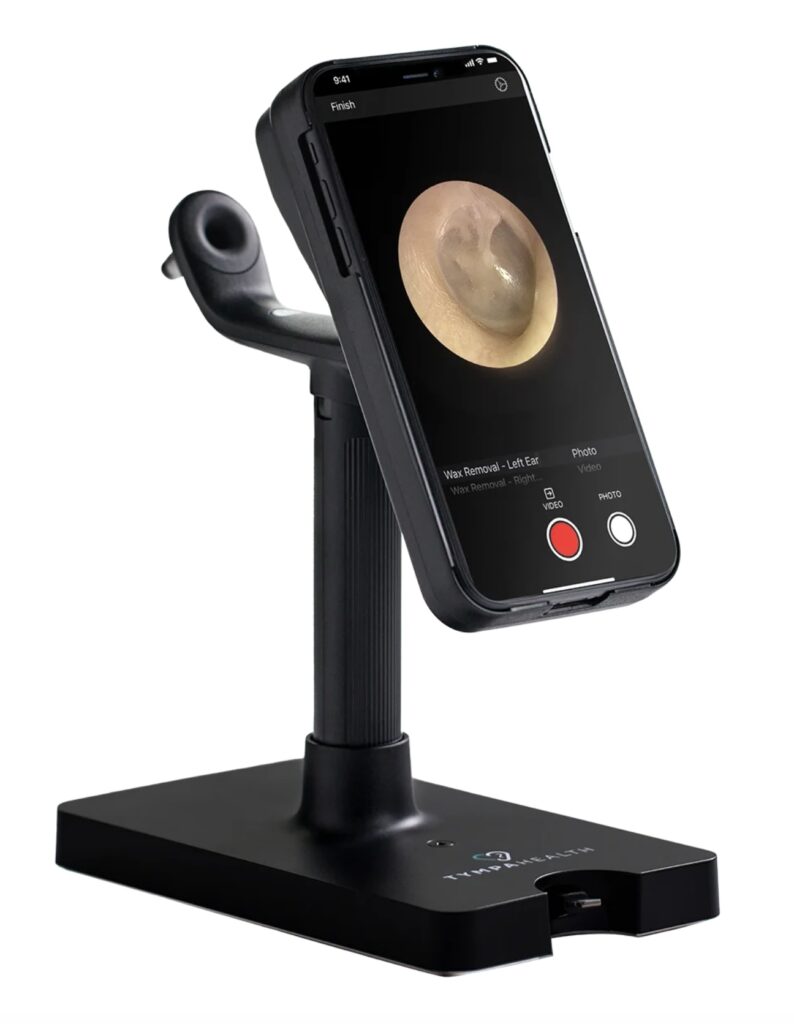When it comes to this painful common ailment, can a pharmacist check for ear infection? With their extensive knowledge of medications and commitment to patient care, pharmacists are well-equipped to assist individuals dealing with the discomfort and pain of an ear infection. In this article, we will delve into pharmacists’ important role in helping identify and manage ear infections, providing you with the information you need to make informed healthcare decisions.
From properly identifying common symptoms to recommending over-the-counter remedies or referring patients to healthcare professionals when necessary, pharmacists can offer valuable guidance and support throughout the process. Whether you’re a parent concerned about your child’s ear infection or an adult experiencing debilitating ear pain, understanding how pharmacists can assist in effectively managing this condition is crucial.
With a focus on patient well-being and a wealth of drug knowledge, pharmacists are an essential resource in the battle against ear infections. So, let’s explore how these healthcare professionals can help you on your path to recovery.
The importance of early detection and treatment of Ear Infections
Understanding the importance of early detection and treatment is crucial in managing ear infections. This knowledge empowers you to take proactive steps in your healthcare.
Ear infections, also known as otitis media or externa, are a common health issue affecting individuals of all ages, from infants to the elderly. While they may seem like a minor inconvenience, ear infections can have severe consequences if left untreated. Prompt detection and appropriate treatment are crucial to prevent complications and ensure a swift recovery.
Early detection is essential because ear infections can progress rapidly, leading to more severe symptoms and potential long-term complications. If left untreated, ear infections can cause permanent damage to the eardrum, hearing loss, and even spread to other parts of the body, such as the mastoid bone behind the ear or the brain. In some cases, recurrent or chronic ear infections can also lead to the development of cholesteatoma. This serious condition requires surgical intervention.
On the other hand, timely treatment can effectively alleviate the symptoms of an ear infection and prevent these complications. By addressing the underlying cause, whether it’s a bacterial or viral infection, the pain, inflammation, and other discomforts associated with ear infections can be effectively managed. This improves quality of life and reduces the risk of long-term consequences, such as hearing impairment or chronic ear problems.

The role of pharmacists in detecting ear infections
Pharmacists play a crucial role in the early detection and management of ear infections. As healthcare professionals with extensive knowledge of medications and the human body, pharmacists are well-equipped to recognise the signs and symptoms of ear infections and provide appropriate guidance to patients.
When a patient visits a pharmacy with concerns about ear pain, discomfort, or other related symptoms, the pharmacist conducts a thorough assessment. This may involve asking questions about the duration and severity of the symptoms, any recent illnesses or exposures, and any underlying medical conditions that could contribute to the problem. By gathering this information, the pharmacist can determine the likely cause of the ear infection and develop a plan for appropriate treatment.
In many cases, pharmacists can also perform diagnostic tests, such as using an otoscope to examine the patient’s ear and assess the condition of the eardrum. The otoscope allows them to identify the presence of fluid, inflammation, or other visible signs of an ear infection, which can then guide the recommended course of action. Pharmacists may also recommend that the patient seek further medical evaluation from a healthcare provider, mainly if the infection appears to be severe or if there are concerns about potential complications.
Understanding the symptoms of ear infections
Recognising the common symptoms of ear infections is essential for both patients and pharmacists in the early detection and management of this condition. The most common symptoms of ear infections include:
- Ear pain: This is often the primary symptom that prompts individuals to seek medical attention. The pain can range from mild discomfort to severe, debilitating pain and may worsen when lying down or moving the head.
- Ear drainage: Fluid or pus may drain from the affected ear, which can be clear, yellow, or even bloody in appearance.
- Hearing loss: Ear infections can cause temporary or even permanent hearing loss, particularly if they are left untreated or affect the eardrum or middle ear.
- Fever: Many ear infections are accompanied by a fever, which can signify a more severe or complicated infection.
- Irritability or difficulty sleeping: Ear pain and discomfort can make it difficult for individuals, especially young children, to sleep or remain calm and comfortable.
- Balance problems: Infections in the inner ear can affect the vestibular system, leading to dizziness, vertigo, or imbalance.
By understanding these common symptoms, pharmacists can more effectively identify and assess the severity of an ear infection, allowing them to provide appropriate recommendations and guidance to patients.
Diagnostic tools used by pharmacists
In addition to conducting a thorough physical examination and gathering information about the patient’s symptoms, pharmacists may also utilise various diagnostic tools to help detect and evaluate ear infections. These tools can provide valuable insights that aid in diagnosing and managing the condition.
One of the primary diagnostic tools pharmacists use is the otoscope, a handheld instrument with a light and magnifying lens that allows for a close inspection of the ear canal and eardrum. By using an otoscope, pharmacists can observe the physical appearance of the eardrum, looking for signs of inflammation, fluid buildup, or other abnormalities that may indicate an ear infection.
Many pharmacists, including those at The Health Dispensary, now use more advanced video technology in partnership with TympaHealth. This equipment captures high-definition pictures and videos of your ears, the clarity of which aids a proper diagnosis. With the Tympa Remote Review feature, we can securely send high-resolution images and videos to a team of Audiologists and ENT specialists for support, advice, and guidance when required.
In some cases, pharmacists may also recommend that patients undergo additional testing, such as a hearing assessment or a referral to a healthcare provider for further evaluation. This collaborative approach helps ensure that the ear infection is diagnosed correctly and that the patient receives the most appropriate and effective treatment.

Treatment options for ear infections
Pharmacists play a crucial role in recommending and providing appropriate treatment options for ear infections. The specific treatment approach will depend on the type and severity of the ear infection, the patient’s age, overall health, and any underlying medical conditions.
Over-the-counter (OTC) medications can often provide effective relief for mild to moderate ear infections. Pharmacists may recommend pain relievers, such as paracetamol or ibuprofen, to alleviate the discomfort associated with the infection. They may also suggest the use of topical eardrops containing numbing agents or anti-inflammatory medications to target the affected area directly.
In cases where the infection is more severe or persistent, pharmacists may recommend prescription medications, such as antibiotics, antifungal or antiviral drugs. Antibiotics can be particularly effective in treating bacterial ear infections. Antibiotics for ears can be in the form of tablets or sprays such as Otomize. Pharmacists can provide guidance on the appropriate dosage, duration, and potential side effects of these medications, ensuring that the patient receives the most effective treatment while minimising the risk of adverse reactions.
In addition to medication management, pharmacists may also offer advice on complementary therapies, such as warm compresses or eardrops containing natural ingredients like almond or tea tree oil. These alternative treatments can help soothe the symptoms and promote healing, particularly in cases where the infection is not severe enough to require prescription medications.
The role of pharmacists in counselling patients
Pharmacists play a crucial role in counselling patients on managing ear infections, providing valuable guidance and support throughout the process. From the initial detection of symptoms to the completion of treatment, pharmacists can offer comprehensive education and advice to help patients navigate this common health issue.
When a patient visits the pharmacy with concerns about an ear infection, the pharmacist will typically begin by conducting a thorough assessment, as mentioned earlier. This assessment allows the pharmacist to understand the specific symptoms, the duration of the infection, and any underlying factors contributing to the problem. With this information, the pharmacist can provide personalised recommendations for the most appropriate treatment options.
In addition to recommending medications, pharmacists can also offer guidance on proper administration techniques, such as the correct way to apply topical eardrops or the importance of completing a full course of antibiotics. They can also educate patients on the potential side effects of medications and how to manage them, ensuring that the patient is well-informed and empowered to take an active role in their care.
Pharmacists may also offer advice on lifestyle and home remedies that can help alleviate the symptoms of an ear infection, such as using warm compresses, avoiding exposure to loud noises, or getting adequate rest. By offering this comprehensive support, pharmacists help patients understand the nature of their condition and empower them to make informed decisions about their treatment and recovery.
Preventative measures for ear infections
While pharmacists’ roles in the detection and treatment of ear infections are crucial, they also play a significant part in educating patients on preventative measures to reduce the risk of developing ear infections in the first place. By promoting proactive strategies, pharmacists can help patients become more active in maintaining their overall ear health and well-being.
One of the primary preventative measures that pharmacists can recommend is proper hygiene and ear care. This includes avoiding the use of cotton swabs or other objects that can push earwax deeper into the ear canal, increasing the risk of infection. Pharmacists may also suggest using eardrops or other products to keep the ears clean and free of excessive wax buildup.
Pharmacists may recommend strategies to strengthen the immune system for individuals prone to recurrent ear infections, such as ensuring adequate vitamin and mineral intake, getting enough sleep, and managing stress levels. By supporting overall health and wellness, pharmacists can help reduce the likelihood of ear infections and minimise the risk of complications.
In cases where ear infections are related to underlying medical conditions, such as allergies or sinus problems, pharmacists may refer to other healthcare providers to develop a comprehensive treatment plan. This collaborative approach can help address the root cause of ear infections and implement adequate preventative measures to reduce the risk of future occurrences.

Collaborative care with other healthcare professionals
When a patient presents with an ear infection, pharmacists may recommend that they seek further evaluation and treatment from a healthcare provider, such as a GP or an audiologist. This referral may be necessary if the infection is severe, if there are concerns about potential complications, or if the pharmacist believes that the patient requires a more specialised level of care.
In these cases, pharmacists can provide valuable information to the healthcare provider, such as the results of any diagnostic tests performed and the pharmacist’s recommendations for treatment. This exchange of information helps to ensure that the patient receives a cohesive and coordinated care plan, with each healthcare professional contributing their unique expertise to the overall management of the ear infection.
Conclusion: The vital role of pharmacists in ear infection management
In conclusion, pharmacists play a vital role in detecting, treating, and preventing ear infections, serving as essential healthcare professionals in managing this common and often debilitating condition. With their extensive knowledge of medications, commitment to patient-centred care, and collaborative approach with other healthcare providers, pharmacists are uniquely positioned to help individuals navigate the challenges of ear infections and achieve optimal health outcomes.
From recognising the early signs and symptoms of ear infections to recommending appropriate treatment options, pharmacists are at the forefront of ensuring that patients receive the care and support they need. By providing comprehensive education, personalised guidance, and access to a range of effective therapies, pharmacists empower patients to take an active role in their own recovery and prevent the development of more severe complications.
As the healthcare landscape continues to evolve, pharmacists’ role in managing ear infections will only become more crucial. By working closely with other medical professionals and advocating for the importance of early detection and proactive treatment, pharmacists can help to ensure that individuals of all ages receive the high-quality, compassionate care they deserve when dealing with this common and often disruptive health issue.


